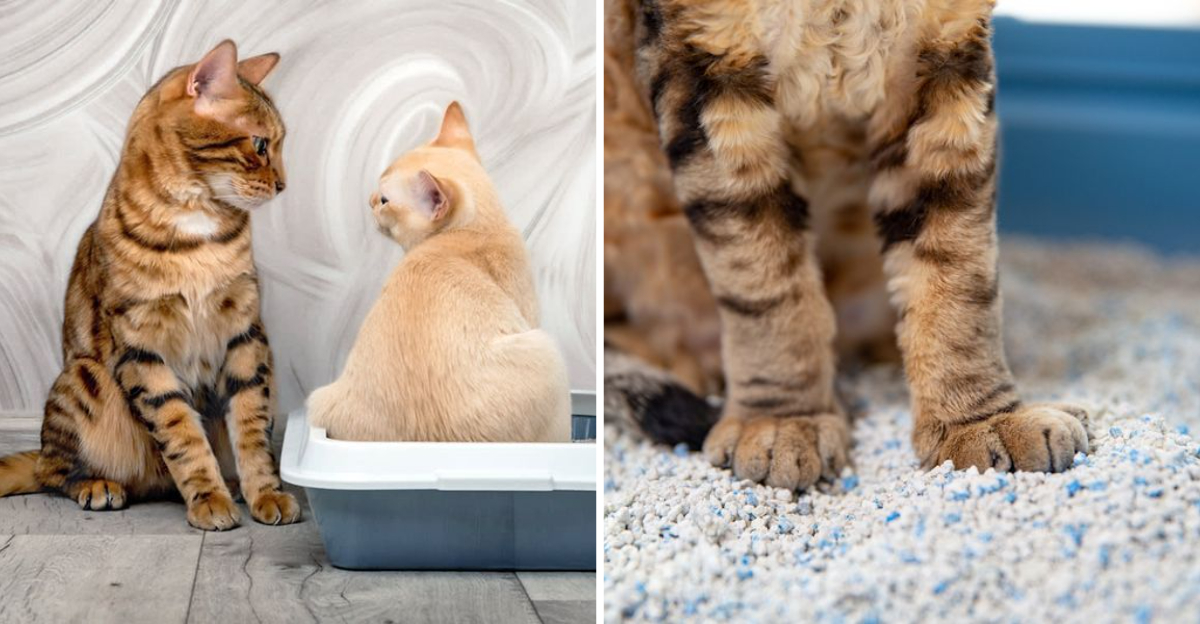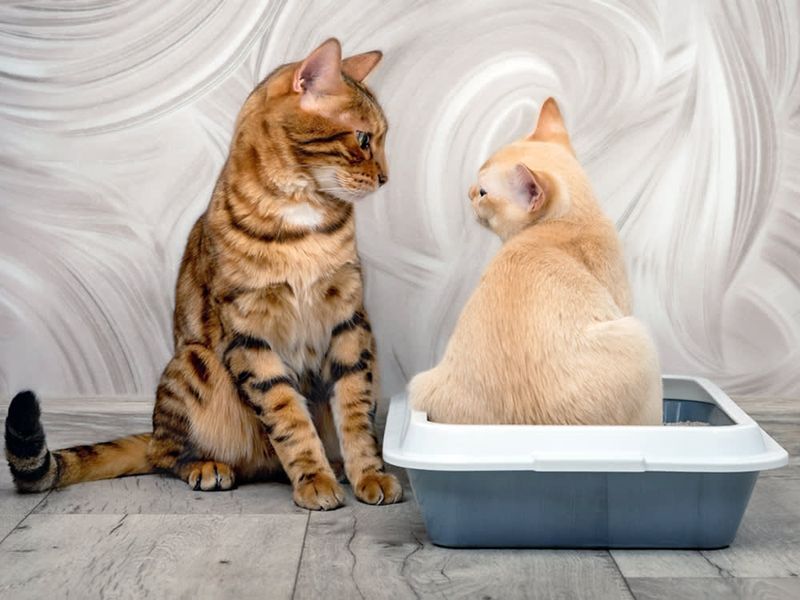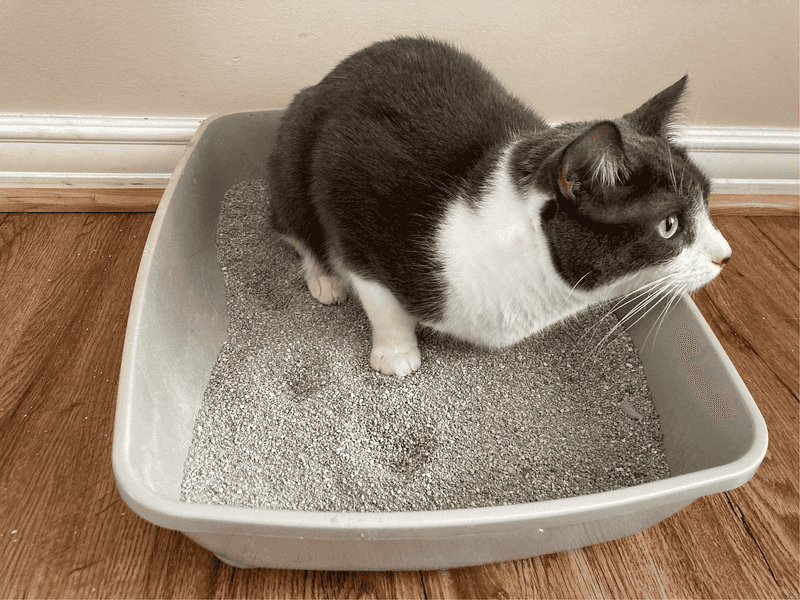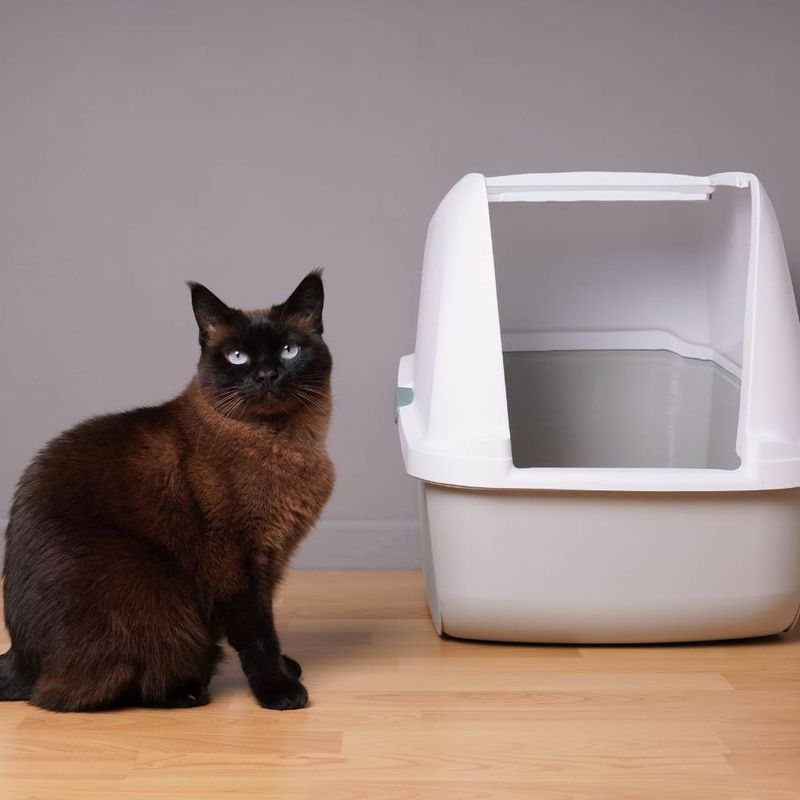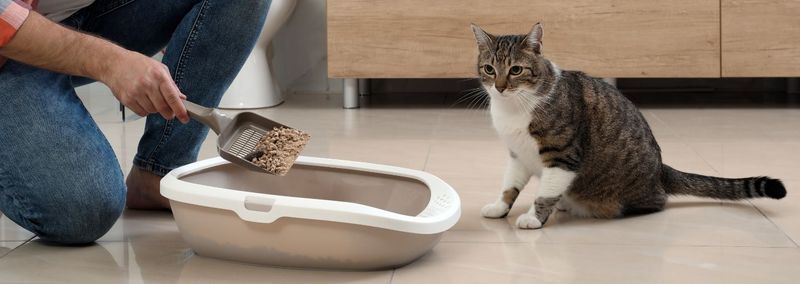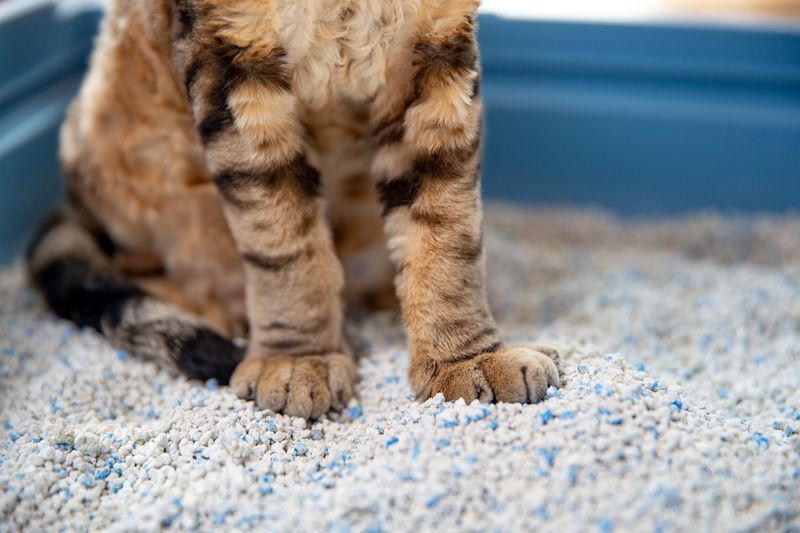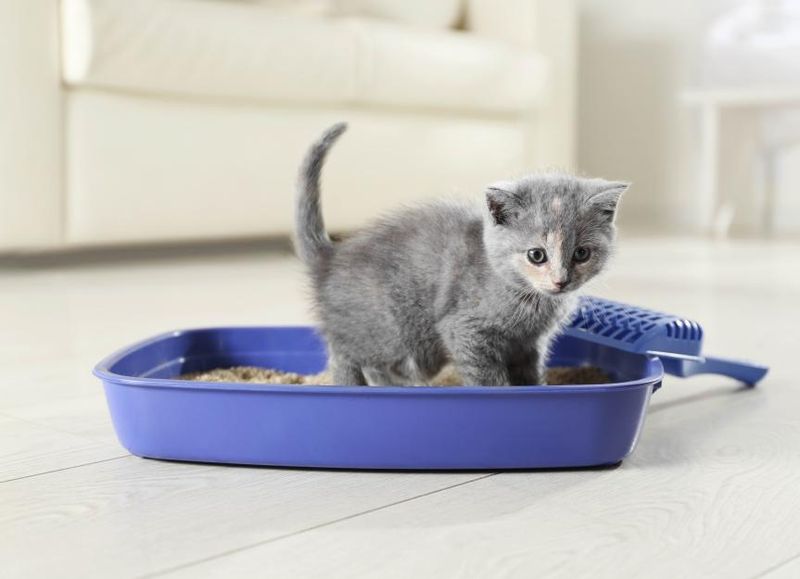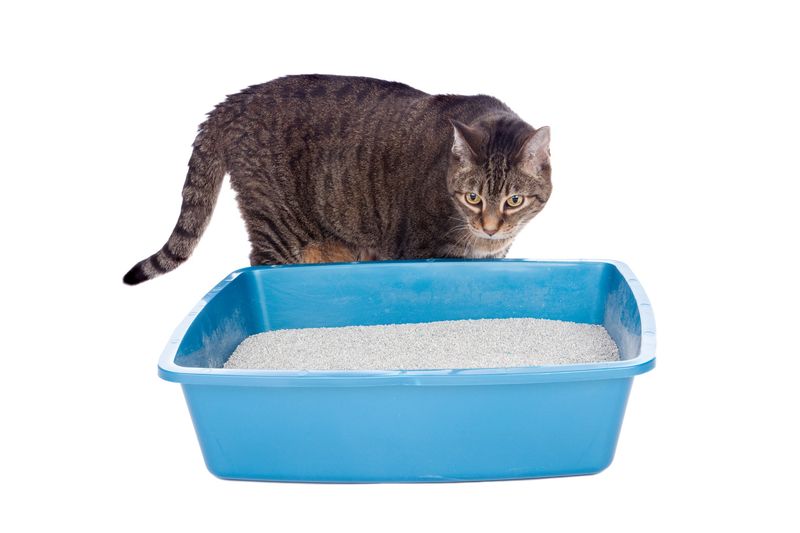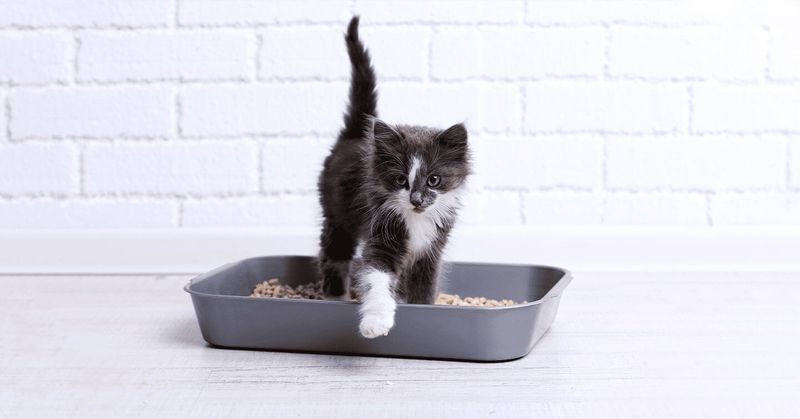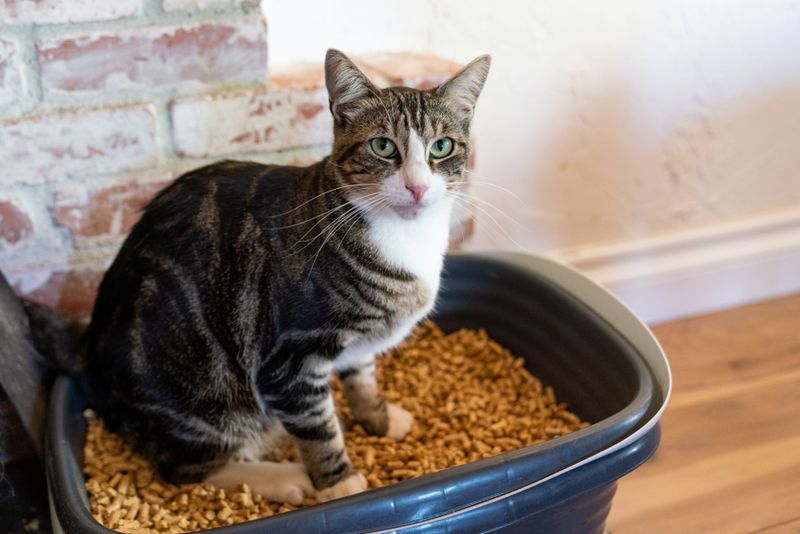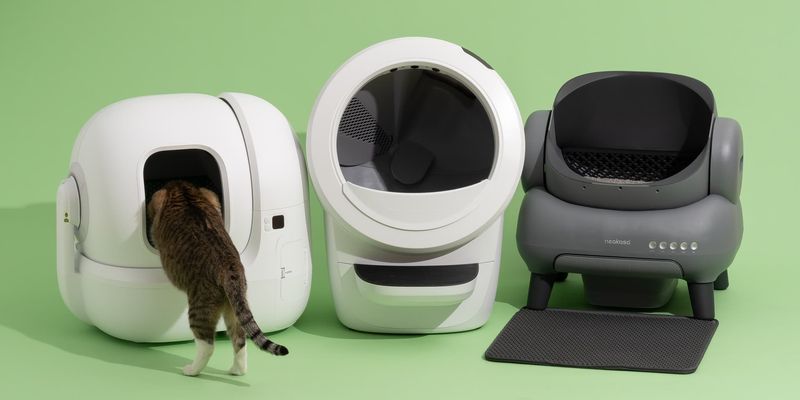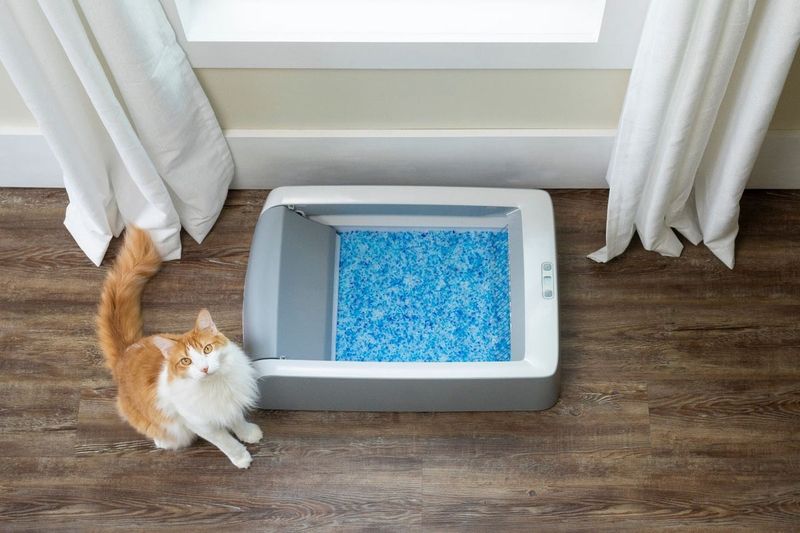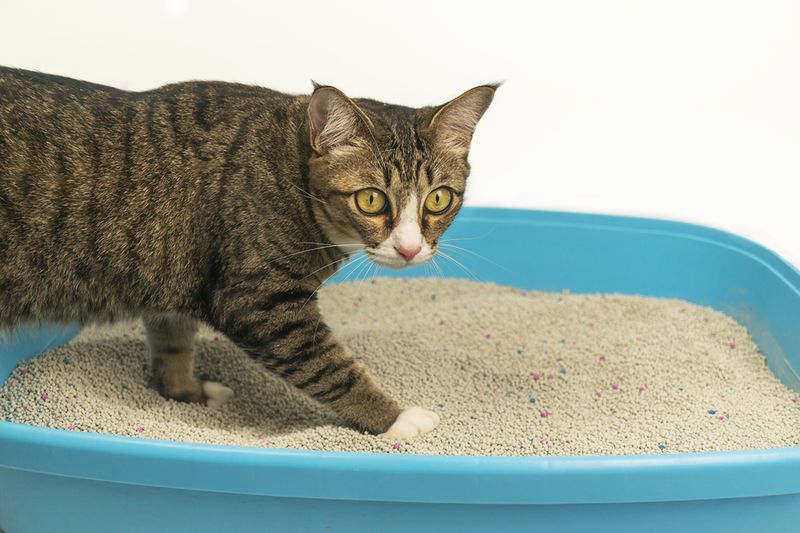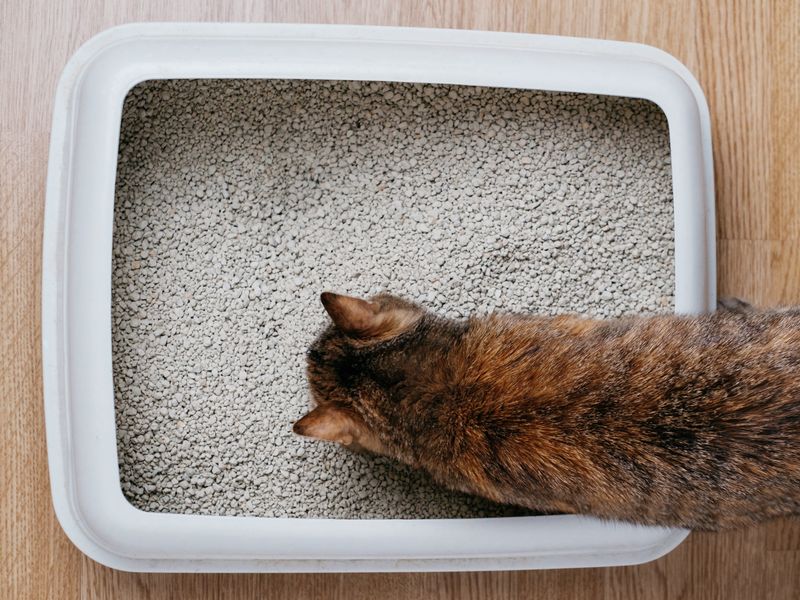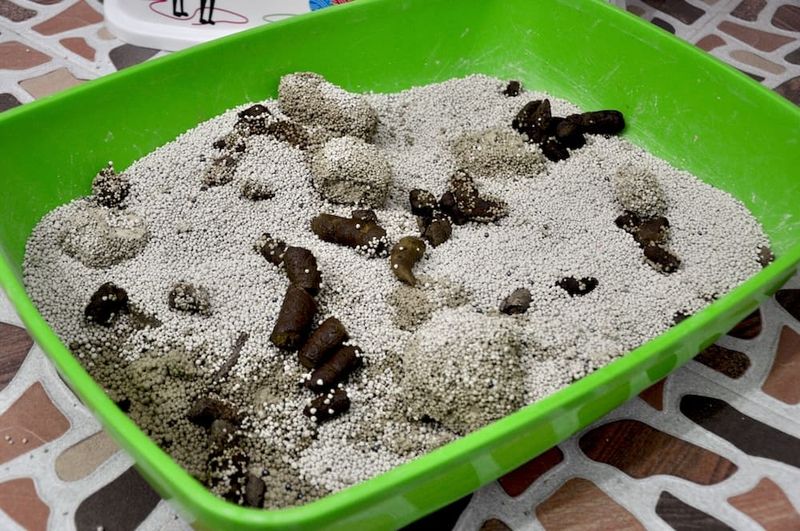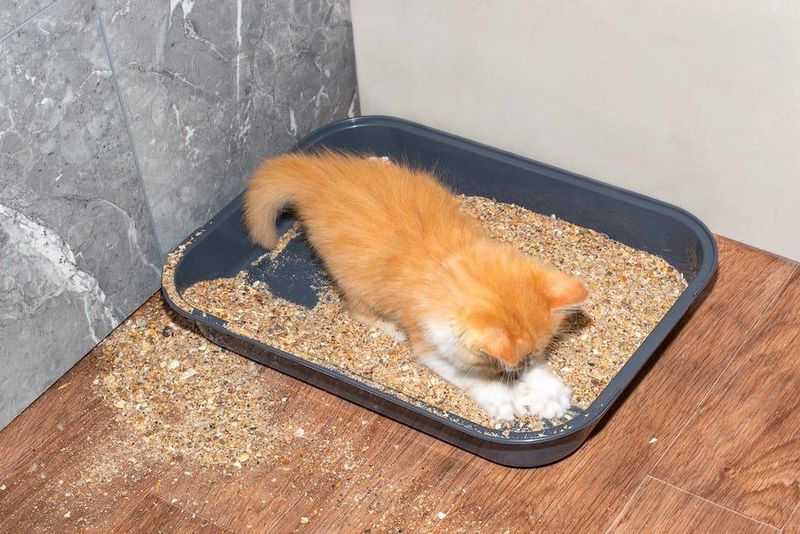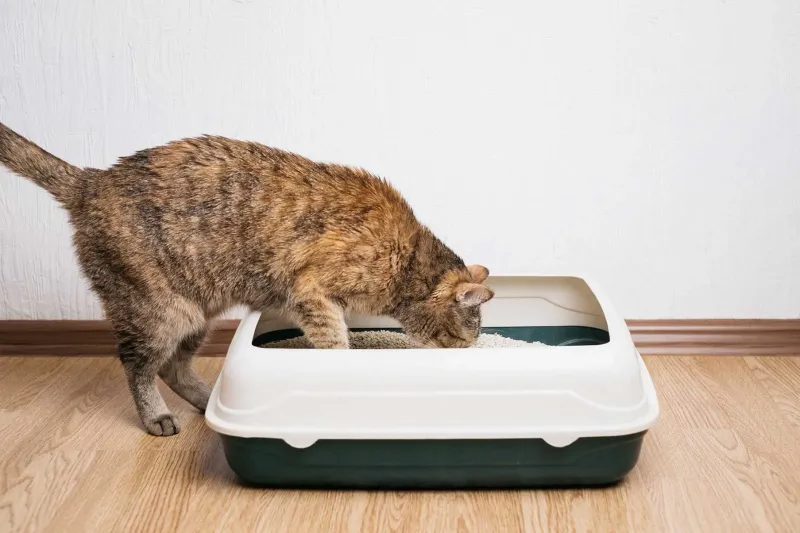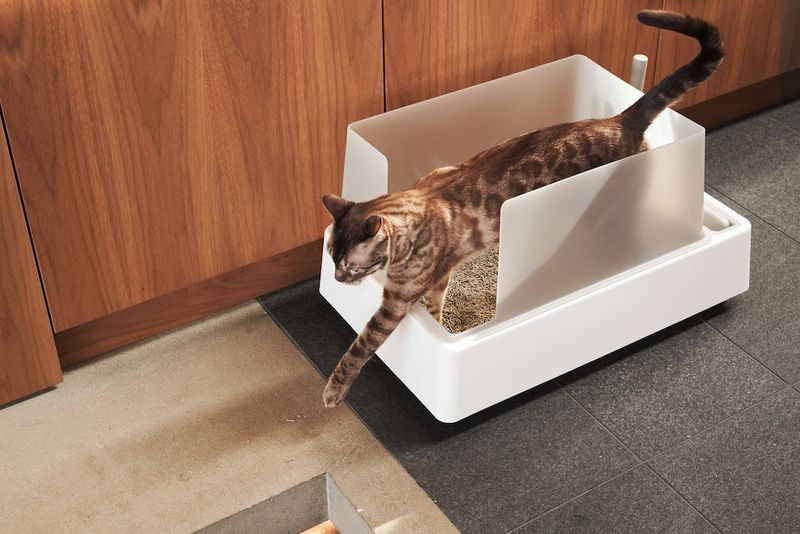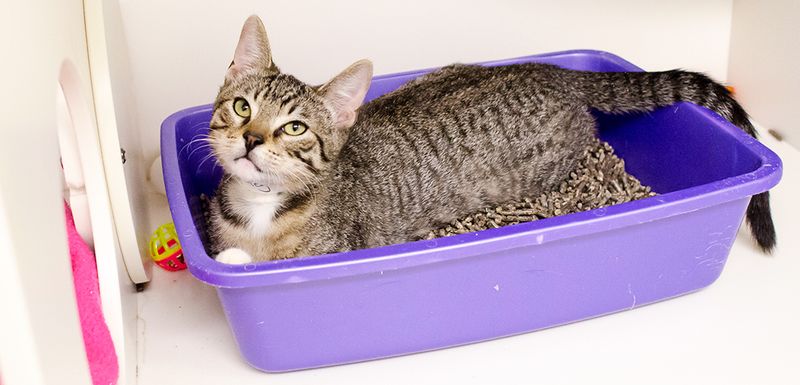📖 Table of Content:
- 1. Cats Instinctively Use Litter Boxes
- 2. One Litter Box Per Cat is Enough
- 3. Litter Boxes Don’t Need Frequent Cleaning
- 4. Clumping Litter is Harmful
- 5. Covered Litter Boxes Are Always Better
- 6. All Cats Hate Water in Litter Boxes
- 7. Scented Litters Mask Odors Completely
- 8. Kittens Can’t Use Adult Litter Boxes
- 9. Cats Always Cover Their Waste
- 10. Litter Box Training is Impossible
- 11. Cats Prefer Fine Sand-like Litter
- 12. Automatic Litter Boxes Are Foolproof
- 13. Cats Don’t Care About Litter Box Location
- 14. Litter Box Liners Are Necessary
- 15. Older Cats Can’t Change Litter Habits
- 16. Cats Don’t Mind Dirty Litter Boxes
- 17. All Cats Can Use the Same Type of Litter
- 18. Litter Boxes Only Serve Sanitary Functions
- 19. Cats Don’t Have Litter Box Preferences
- 20. Litter Box Materials Don’t Matter
- 21. Cats Will Always Use the Litter Box If It’s Available
Many misconceptions surround the humble cat litter box, leading to misunderstandings and challenges for cat owners. By debunking these myths, we aim to improve the lives of both cats and their humans. From misunderstandings about cat behavior to myths about cleaning and maintenance, this guide will clarify the truth and help you provide a more comfortable environment for your feline friend.
1. Cats Instinctively Use Litter Boxes
While many believe cats instinctively use litter boxes, this is only partially true. Kittens often learn from their mothers, but some may need guidance. Placement and type of litter can significantly affect a cat’s willingness to use a box. Experimenting with different kinds of litter and locations may help. It’s not always intuitive for every cat, so patience and understanding are key. Providing a variety of options can encourage proper use. Cats are creatures of habit, so disruptions may also require retraining.
2. One Litter Box Per Cat is Enough
Many assume a single box per cat suffices, but experts recommend one per cat plus an extra. Cats may prefer their own space for such private activities. Conflicts can arise in multi-cat homes over box usage. More boxes reduce stress and accidents. Each cat having personal space can lead to a harmonious household. The extra box acts as a buffer, offering flexibility and peace. Owners should monitor usage to ensure each cat’s comfort.
3. Litter Boxes Don’t Need Frequent Cleaning
Some believe litter boxes need minimal cleaning, but this misconception harms hygiene. Daily scooping is essential for odor control and health. Cats are tidy creatures and may avoid a dirty box. Regular cleaning prevents bacteria buildup and keeps everyone, human and feline, happy. Neglected boxes lead to accidents and stress. Maintaining cleanliness fosters a positive environment, encouraging consistent use. Owners should establish a routine to ensure their cat’s well-being.
4. Clumping Litter is Harmful
The myth that clumping litter is harmful stems from misunderstandings about its materials. Clumping litter, typically made of bentonite clay, can be safe when used properly. It helps in maintaining cleanliness by forming solid clumps, making it easy to remove waste. Cats often prefer its fine texture, reminiscent of their natural elimination sites. Concerns arise when cats ingest large amounts, so monitoring is wise. However, for most, it’s a convenient option aiding in odor control.
5. Covered Litter Boxes Are Always Better
Covered boxes might seem appealing for containing messes, but they aren’t always ideal. Some cats feel trapped, leading to avoidance. Air circulation issues can also intensify odors inside. While they reduce scatter, they don’t suit every feline. Uncovered boxes provide visibility and a quick escape route, crucial for anxious cats. Assess your cat’s behavior; their comfort should dictate your choice. Experimentation can reveal preferences, fostering a stress-free environment.
6. All Cats Hate Water in Litter Boxes
It’s a common belief that all cats despise water near their litter box. While many prefer dry conditions, some are intrigued by water. This varies with individual personalities. Cats might play with water, but a water-filled box isn’t suitable for elimination. It’s crucial to ensure the area remains dry for sanitary purposes. Understanding your cat’s unique preferences can guide appropriate litter box setup. Offering multiple dry options ensures comfort and encourages proper use.
7. Scented Litters Mask Odors Completely
While scented litters claim to eliminate odors, they often just mask them. Strong fragrances can be overwhelming for sensitive feline noses. Cats may refuse to use overly perfumed litters, associating them with discomfort. Odor control is best achieved through regular cleaning, not artificial scents. Unscented, clumping litters are often preferred by cats. Owners should remain attentive to their pet’s reactions, choosing options that ensure their comfort and health.
8. Kittens Can’t Use Adult Litter Boxes
The idea that kittens can’t use adult litter boxes is misleading. Kittens are adaptable and can learn to use larger boxes with guidance. Though smaller boxes are often recommended, accessibility is the key factor. Ensure the sides aren’t too high to climb, and supervision during initial use can smooth the transition. Encouragement and patience help foster acceptance, allowing them to grow into their litter habits. With proper introduction, kittens can thrive using standard boxes.
9. Cats Always Cover Their Waste
The notion that all cats cover their waste isn’t universally true. While many do, some don’t, due to instinctual or situational reasons. In the wild, covering can hide scent from predators, but domestic cats may not feel the same urge. Factors like territoriality or discomfort with the box might influence this behavior. Understanding and accepting individual preferences is crucial. Providing a comfortable and clean environment can encourage covering, but it’s not guaranteed.
10. Litter Box Training is Impossible
Training a cat to use a litter box isn’t impossible but requires patience and consistency. Start by placing the box in a quiet, accessible location. Introduce the cat gently, using positive reinforcement when they use it correctly. Avoid punishing mistakes as this can lead to fear and avoidance. Gradually move the box to the desired spot if necessary. Cats are intelligent and can learn with the right encouragement, creating a successful litter box routine.
11. Cats Prefer Fine Sand-like Litter
While many cats prefer sand-like litter due to its texture, preferences vary. Some enjoy larger granules or alternative materials like pine. Observing your cat’s choices can guide you to the best option. Texture can impact comfort and usage, so it’s worth experimenting. Cats’ sensitivities often dictate their litter preferences, with some showing strong aversions. Offering choices can enhance satisfaction and promote consistent use. The key is understanding your cat’s individual taste.
12. Automatic Litter Boxes Are Foolproof
Automatic litter boxes promise ease but aren’t foolproof. Malfunctions can occur, and some cats fear the noise or movement. Regular maintenance is essential to prevent jams and ensure proper function. Not all cats will adjust to automation, requiring gradual introduction. While convenient for some, manual alternatives may still be preferable for others. Owners should evaluate their cat’s comfort level and the device’s reliability. Each pet’s unique needs will dictate the best solution.
13. Cats Don’t Care About Litter Box Location
The belief that cats are indifferent to litter box location is misguided. Cats prefer quiet, accessible areas away from food and loud noises. A poorly placed box can lead to avoidance and accidents. Ensuring privacy and accessibility can encourage consistent use. Observing behavior and experimenting with locations can reveal preferences. Owners should aim to create a comfortable and stress-free environment, enhancing their cat’s sense of security and satisfaction.
14. Litter Box Liners Are Necessary
While liners seem practical for cleanliness, many cats find them irritating. Liners can tear, leading to messes rather than preventing them. Cats may claw them, seeking the familiar feel of the litter beneath. Not all cats adapt well to liners, with some refusing to use lined boxes altogether. Assessing your cat’s comfort and experimenting with or without liners can guide your choice. Maintaining hygiene through regular cleaning might be more effective and less stressful.
15. Older Cats Can’t Change Litter Habits
The notion that older cats can’t change their litter habits is misleading. With patience and gradual adjustments, they can adapt. Aging cats may require accommodations like lower-sided boxes for easier access. Introducing changes slowly and monitoring reactions ensures a smoother transition. Supportive environments and positive reinforcement foster adaptability. While older cats might resist sudden changes, gentle guidance can help them embrace new routines, proving adaptability isn’t just for the young.
16. Cats Don’t Mind Dirty Litter Boxes
The idea that cats don’t mind dirty litter boxes couldn’t be further from the truth. Cats are fastidious creatures that prefer cleanliness. A neglected box can lead to avoidance or accidents elsewhere in the home. Regular scooping is crucial to maintain hygiene and encourage consistent use. Cleanliness supports a positive environment for both pet and owner. Ensuring a fresh and inviting box reflects respect for your cat’s natural instincts and fosters harmony.
17. All Cats Can Use the Same Type of Litter
Assuming all cats will accept the same litter type overlooks individual preferences. Cats can be particular about texture, scent, and material. Some may reject certain litters due to sensitivities or previous experiences. Offering a variety can help identify preferences, ensuring satisfaction and consistent use. Each cat’s unique characteristics and history influence their choices. Owners should remain attentive to their pet’s reactions, adapting as necessary to provide the best environment.
18. Litter Boxes Only Serve Sanitary Functions
While primarily for hygiene, litter boxes can also serve as spaces for exploration and play. Cats may dig and scratch, engaging their natural instincts. Observing these behaviors can provide insights into your cat’s preferences and needs. Incorporating toys or different textures can enhance enrichment. Recognizing the multifaceted role of litter boxes encourages a more fulfilling environment. Balancing functionality with engagement can lead to happier and healthier cats.
19. Cats Don’t Have Litter Box Preferences
The belief that cats lack preferences for litter boxes is inaccurate. Many exhibit distinct choices, favoring specific styles, sizes, or locations. Understanding these preferences requires observation and experimentation. Providing options caters to these individualities, promoting regular use. Acknowledging their preferences respects their autonomy and needs. Creating an accommodating environment reflects a commitment to their well-being. Keeping an open mind and adapting ensures a harmonious household.
20. Litter Box Materials Don’t Matter
The materials used in litter boxes can significantly impact a cat’s experience. Plastic is common, but alternatives like metal or ceramic offer different benefits. Cats may react to the box’s feel or scent, influencing their usage. Experimenting with materials can reveal preferences, enhancing comfort and satisfaction. Durability and cleanliness should also guide choices. A well-chosen material can improve hygiene and appeal, reflecting thoughtful care for your pet’s needs.
21. Cats Will Always Use the Litter Box If It’s Available
The assumption that cats will always use an available litter box is flawed. Factors like cleanliness, location, or stress can lead to avoidance. Observing behavior and identifying barriers can guide solutions. Consistent cleaning and strategic placement support regular use. Addressing underlying issues like stress or discomfort ensures satisfaction. Understanding and adapting to your cat’s needs fosters a more harmonious relationship, reinforcing consistent and positive litter box habits.
